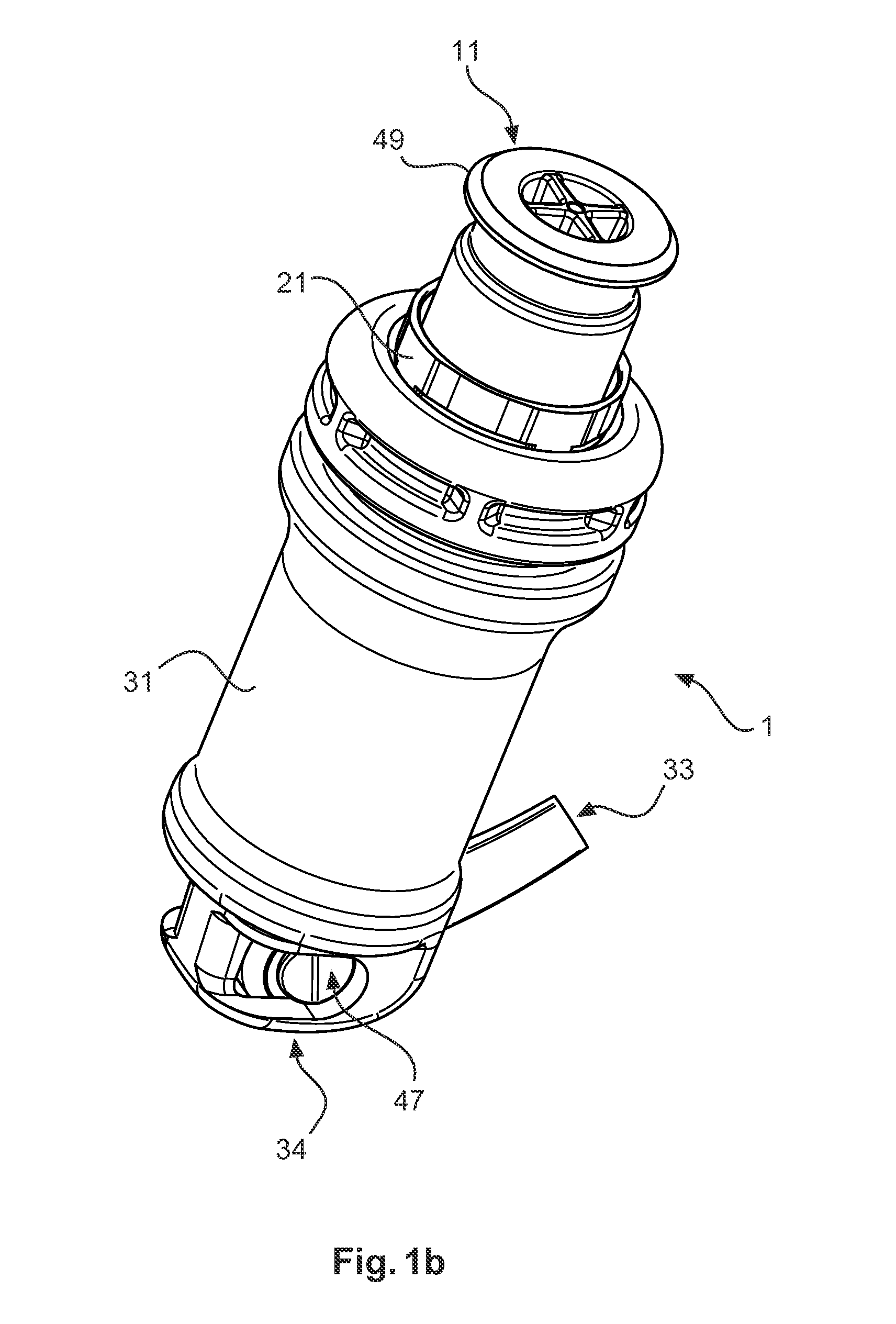Mixing and application capsule for producing a dental preparation
a technology applied in the field of mixing and application capsules for producing dental preparations, can solve the problems of indefinite liquid residue, inability to achieve the desired effect, and folds of films, etc., and achieves the effect of facilitating the opening of the closing elements, facilitating reading, and sealing better against the mixture componen
- Summary
- Abstract
- Description
- Claims
- Application Information
AI Technical Summary
Benefits of technology
Problems solved by technology
Method used
Image
Examples
Embodiment Construction
[0091]FIGS. 1a and 1b show firstly an exterior view of a mixing and application capsule 1 according to the invention, called capsule 1 hereinafter. Capsule 1 has a capsule body 31. A first piston body 11 (see FIGS. 1a, 2) and a second piston body 21 are arranged inside the capsule body 1. The second piston body 21 extends partly outside of the capsule body 31. An overhang 49 is formed on the projecting end of the second piston body 21.
[0092]FIG. 1a, left, shows at one end of the capsule 1, which is arranged opposite the second piston body 21, a cannula 33 arranged with an outlet. The outlet is designed for application of the dental preparation within the oral region of a patient. The cannula can be moved to and fro between a closed position and an open position. The cannula is shown in the closed presentation in FIG. 1a. In this position, the outlet is not in fluid-conveying communication with the interior of the capsule body 31. The cannula 33 is held in a snap-in connection by two...
PUM
 Login to View More
Login to View More Abstract
Description
Claims
Application Information
 Login to View More
Login to View More - R&D
- Intellectual Property
- Life Sciences
- Materials
- Tech Scout
- Unparalleled Data Quality
- Higher Quality Content
- 60% Fewer Hallucinations
Browse by: Latest US Patents, China's latest patents, Technical Efficacy Thesaurus, Application Domain, Technology Topic, Popular Technical Reports.
© 2025 PatSnap. All rights reserved.Legal|Privacy policy|Modern Slavery Act Transparency Statement|Sitemap|About US| Contact US: help@patsnap.com



